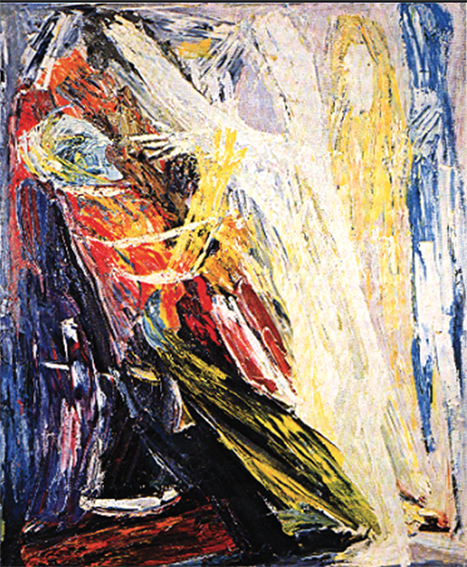What science can now tell us
This “Post” makes available the introduction to my book “Painting with Light and Colour” (please find link blow). As is the case with all introductions, it comes at the beginning of the book. However, I have delayed publishing it on this “Posts Page”, until after making available many of the chapters it introduces, as well as some additional material. As a result, when writing this “Posts Page” introduction to the actual book, it has been possible to to refer to what comes after it. As I can see that doing so may have many advantages for those who have read the previously published chapters and material and maybe even for new readers, I have not hesitated to do so.
Two earlier Posts draw attention to the historical importance of Seurat’s science-based ideas on the practice of painting light and colour. In the “Venetian Colourists” , it is argued that the artists known by this label and those who built upon their ideas were not “colourists” at all. Rather they were “lightists”, whose reputation as “colourists” was based on their mastery of whole-field lightness/darkness relations (“chiaroscuro“). Colour did not enter into the theory of painting light until Seurat introduced his idea of using optically-mixed arrays of separate dots of complementary pigment-colours to give a new kind of luminosity to his paintings. This step proved to be the precursor of a transformative jump from “lightists” to “colourists”.
The next steps, which were were taken by such artists as Cézanne, Gauguin and Bonnard, were later to inspire the synthesis of my teacher Marian Bohusz-Szyszko. It is these that provide the main subject matter of the first two chapters of my book “Painting with Light and Colour”. Chapter 1, “the Dogmas” , along with my Posts Page introduction to it, can be obtained by clicking on this link. In it I explain how, in addition to having an abiding influence on both my own painting and my teaching, the synthesis was to:
- Provide the questions that led to my scientific research into the perception of surface, space, light and harmony in paintings (see link below).
- Pique my curiosity about its origins in ways that led to my interest in the history of the influence of science on the ideas and work of the Impressionists and their Early Modernist successors.
- Lead to the gamut of practical insights on the use of colour in painting that distinguish my books from others on the same subjects.

An introduction to key ideas
To help readers to navigate the considerable quantity of unfamiliar science-based ideas contained in my book “Painting with Light and Colour”, I decided to preface its main content with an “Introduction to the science”, which can be obtained by clicking below.
.
INTRODUCTION TO THE NEW SCIENCE – IN “PAINTING WITH LIGHT AND COLOUR”
.
Posts relating to chapters from “Painting with Light and Colour”:
- Introduction: the little known Science behind the many innovative practical suggestions.
- Chapter 1 : The dogmas
- Chapter 2 : Doubts
- Chapter 3 : The nature of painting
- Chapter 4: Renaissance ideas
- Chapter 5 : New Science on offer
- Chapter 6 : Early Modernist Painters
- Chapter 7 : The perception of surface
- Chapter 8 : Seurat and Painting with Light
- Chapter 9 : Seeing Light
- Chapter 10 : Illusory pictorial space and light
- Chapter 11 : Colour mixing – definitions and misconceptions
- Chapter 12: The colour circle: Misunderstandings
- Chapter 13 : Finding a maximum of colours
- Chapter 14 – Colour mixing made easy
- Chapter 15 – Colour mixing by layering
Other Posts on colour and light in painting:
- What are colourists? (1): Some of the many meanings of the word
- What are colourists? (2): Difference between meaning of the word for Venetian Colourists and for Modernist Colourists?
- What does the word “colour” mean?
Other Posts on light and colour in painting:
- What are colourists (1): Some of the many meanings of the word?
- What are colourists (2): Difference between meaning of the word for Venetian Colourists and for Modernist Colourists?
This is fascinating work, Francis. Thanks so much for sharing.
I don’t think it can be overestimated how much ‘the dogmas’ and your greatly extended research on them has on what can be achieved with colour in paintings. Whether a painter wishes to use this information or not, I feel it is something that should become common knowledge for any serious painter. Thank you for sharing your learnings here!
Another interesting post
merci de ces informations précieuses qui nourrissent nos connaissances dans l’histoire de la peinture.
Really fascinating stuff! Understanding the science behind how we perceive the world around us is crucial to the use of color in painting.
There is so much to be gained from reading the scientific information you provide here. You are absolutely changing the way I look at the world. Thank you.
The scientific information you have presented about light and color, and our perception of each, is fascinating. You are absolutely changing the way I see the world. Thank you.
I chose to come to The Painting School of Montmiral to learn whatever I might. The website describes a rigorous and academically oriented curriculum. I was Not seeking a summer holiday although there is no place more beautiful than Montmiral.
Francis has handed me the keys to the kingdom. His theories are tested by science in collaboration with experts on visual perception. The information in his books, his informal lectures, and the great amount of time he spends one-on-one clearly layout why I had not been able to move forward with my work. I experienced a breakthrough within 3 days.